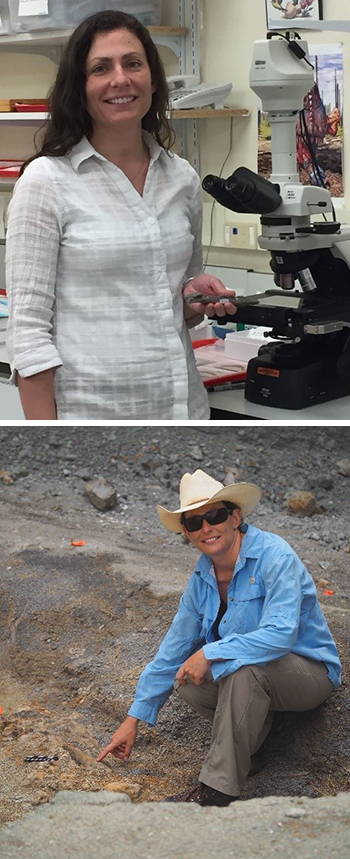
In 2010, US postgraduate student, Holly Woodward Ballard, travelled to Australia for two months as part of the National Science Foundation’s East Asia and Pacific Summer Institutes (EAPSI) program, which is supported by the Australian Academy of Science.
Holly researched fossil bone tissue microstructure from dinosaurs living in extreme environments, like the Antarctic Circle. Bone tissue contains the growth record of an individual, providing detailed life history information, such as growth rate and age. The dinosaurs living in Victoria 120 million years ago would have experienced freezing conditions and months of complete darkness, and Holly wanted to know how such an environment affected their biology or behaviour.
Professor Patricia Vickers-Rich and Dr Tom Rich collect dinosaur fossils from Victoria and curate them at the Melbourne Museum. They supported Holly’s research proposal and became collaborators.
The initial results of her research visit and their collaboration were published a year later in the journal PLoS ONE. They discovered that the little dinosaurs living in Antarctic conditions had bone tissue very similar to their lower-latitude relatives, meaning that the shared physiology of this group permitted them to be successful in the polar environment without requiring any extreme adaptations, such as hibernation. She has remained in contact with her Australian collaborators as she knows there is more to learn about the little polar dinosaurs.
Holly received her PhD in 2012 and moved to a position at the Oklahoma State University Center for Health Sciences. She is currently an Assistant Professor of Anatomy and instructs medical students, has developed a research lab, advises her own postgraduate students, and organises and leads annual field expeditions.
She began a detailed examination of the polar dinosaur bone tissue microstructure, building a descriptive and quantitative dataset. This research led to a recent Scientific Reports publication. The bone tissue revealed the dinosaurs grew to their wallaby size in five to seven years, and grew most rapidly during their first three years of life. One individual was badly injured, and the bone tissue showed that it had lived with its broken bone, and subsequent infection, for several years before it died.
Holly says her experience in the EAPSI program has had a profound effect on her as a scientist.
‘It permitted lasting international collaborative opportunities that I would not otherwise have had, resulting in two publications. I anticipate additional projects with my Australian colleagues in the future.
‘Such funding opportunities are crucial for ambitious postgraduate students, preparing them for a professional career by building collaborative scientific networks, promoting critical thinking and problem-solving skills, and providing the research opportunities necessary for early-career publications.’
With a review of the EAPSI program currently underway, the Academy is this year supporting the Australia–Americas PhD Research Internship Program.
© 2025 Australian Academy of Science